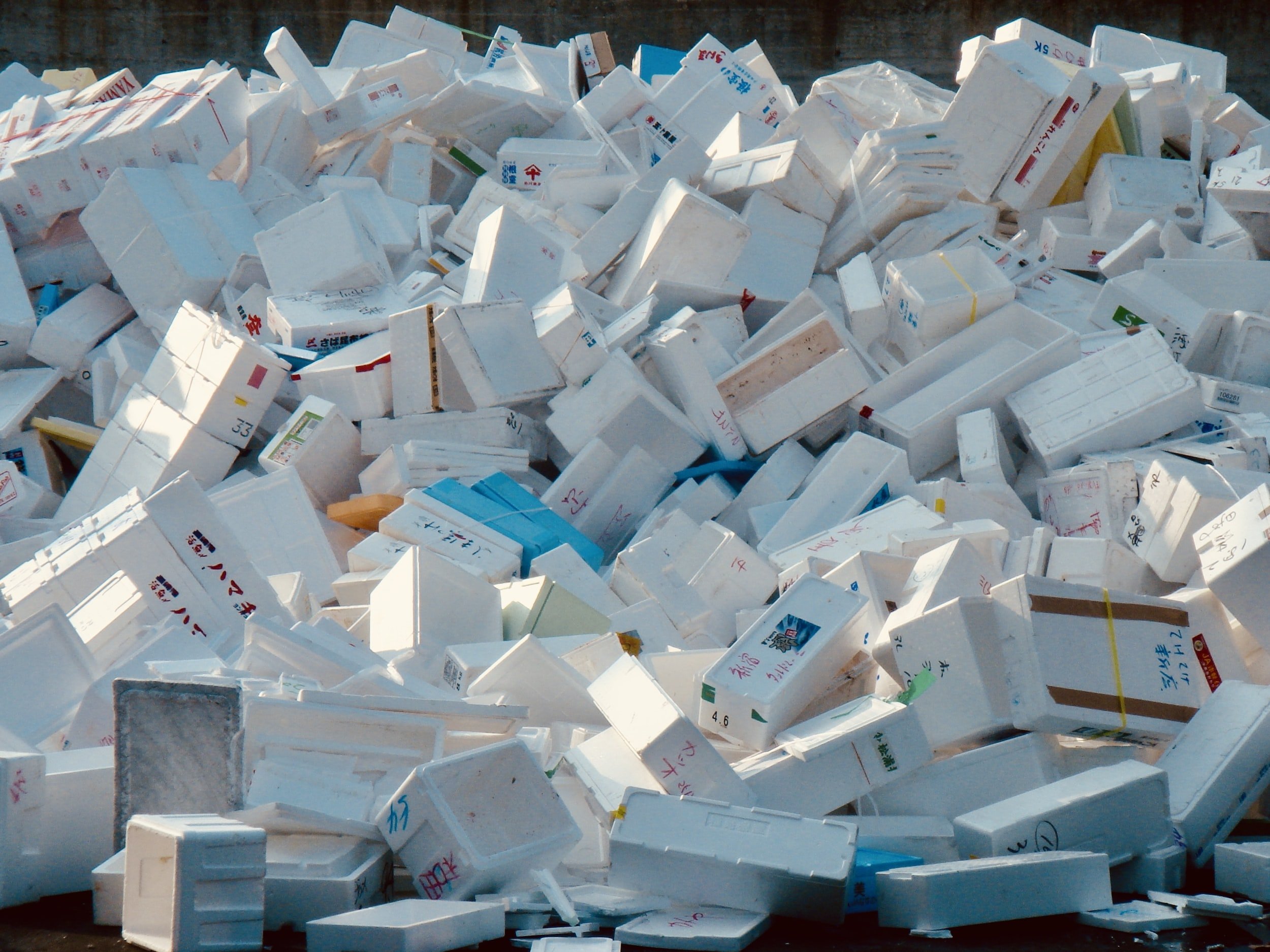Foam Facts: Recycle Styrofoam to Reduce Your Carbon Footprint
Recycling Styrofoam (also known as Expanded Polystyrene) has not been easy. Oftentimes we find ourselves with packing products piled up in our garage with nowhere to go but the trash can. However, there is a way for you to improve your carbon footprint. It takes a little bit more effort than just tossing your Styrofoam cup into the blue bin, though.
Piles of Styrofoam boxes
Many problems arise when Styrofoam is discarded in the trash. Styrofoam increasingly impacts waste management as it occupies landfills. Due to the fact that it is non-biodegradable, it can also release chemicals into the environment and take up to 500 years to break down. Petroleum is the core ingredient within styrofoam and contributes to an increase of greenhouse gas emissions and, thus, our carbon footprint. By extending the life cycle of the item, recycling not only lowers carbon emissions but also eases the strain on the planet's finite resources.
You can recycle polystyrene via the use of polystyrene compactors. These are machines that apply pressure to Styrofoam products to reduce the size of the polystyrene, creating what is called a bale (a compact, highly dense cube). When you have enough bales, you can drop them off at a recycling company, and even earn cash for all that unwanted waste!
A few local government sites have their own compactor machines, so you won’t need to worry about the extra steps of creating bales for drop offs. Just look for the nearest Environmental Collection Center and make sure to comply with their regulations. Their websites should clearly note the type of Styrofoam they will accept, since there are types of styrofoam that are non-recyclable.
To find more resources on how you can help make a difference, visit Foam Facts. You can rely on this website to direct you to a recycling facility that will accept discarded takeout containers, cups, and packaging remnants. It also provides curbside pick-up locations for foam recycling as well as drop-off foam recycling centers.

